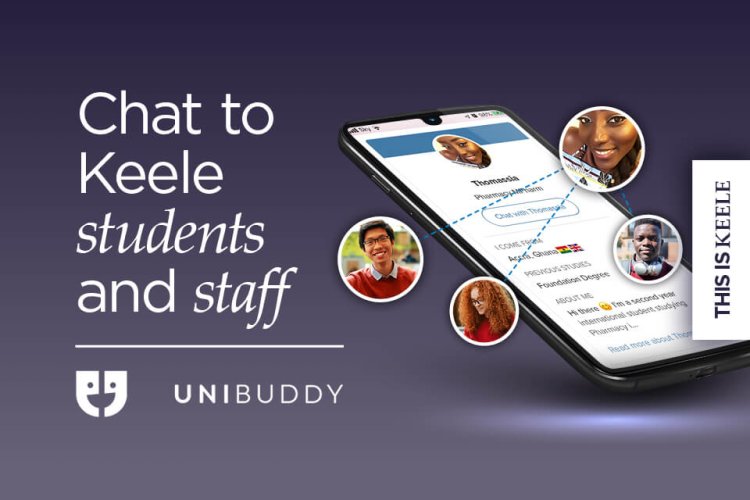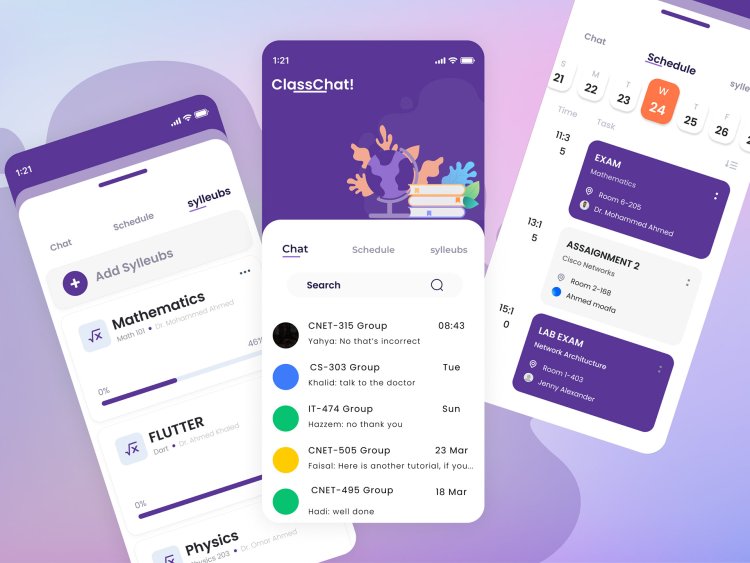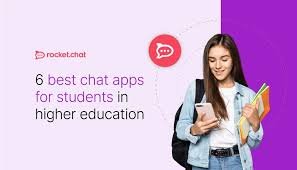Chat to Students
Description (Meta Tag) The meta description provides a brief summary of the page content. It’s often displayed in search engine results beneath the page title.

The Evolution, Impact, and Future of Communication in Education
Introduction
Overview of Chat Tools in Education Communication has always been a cornerstone of effective education. As educational institutions increasingly adopt digital tools, chat platforms have become integral to enhancing learning experiences. This blog explores how these tools have evolved, their current role in education, and their potential future impact.
Importance of Communication in Education Effective communication supports student engagement, facilitates collaboration, and enhances learning outcomes. Chat tools have introduced new ways for students and educators to interact, offering real-time feedback and fostering a more connected learning community.

Chapter 1: The Evolution of Chat Tools
Early Communication Tools
- Traditional Methods: Letters, telephone calls, and in-person meetings were the primary means of communication in the early education systems. These methods were often time-consuming and lacked immediacy.
- Bulletin Boards: Used for announcements and important notices, these physical boards offered a centralized place for information but limited interaction.
The Rise of Instant Messaging
- Early IM Platforms: Platforms like AOL Instant Messenger (AIM) and ICQ revolutionized communication with real-time messaging. They allowed for instant interaction and collaboration, laying the groundwork for modern educational chat tools.
- Integration into Academic Settings: Early adopters began using IM for group work and student-instructor communication, demonstrating the potential for enhanced engagement and efficiency.
Social Media and Education
- Facebook and Twitter: These platforms introduced new ways for educators to share resources, create discussion groups, and engage with students outside of the classroom. Social media helped build virtual communities but also raised issues regarding privacy and the blending of personal and academic lives.
- Benefits and Challenges: While social media platforms facilitated broader communication, they also posed challenges such as distractions and the need for clear boundaries between personal and educational interactions.
Modern Chat Platforms
- WhatsApp, Slack, Microsoft Teams: These platforms offer advanced features like file sharing, video conferencing, and integration with other tools. They support real-time communication and collaboration, making them ideal for both academic and administrative purposes.
- Features and Functionalities: Modern chat tools include customizable notifications, direct messaging, group chats, and integration with educational management systems, providing a comprehensive suite of features to enhance the learning experience.
-

Chapter 2: Chat Tools for Student Engagemeng
-
Enhancing Classroom Interaction
Real-Time Q&A and Discussions: Chat tools enable instant question-and-answer sessions and discussions, allowing students to engage more deeply with the material and with each other. - Group Projects and Collaborative Work: Tools like Slack and Microsoft Teams facilitate group collaboration by providing a platform for sharing documents, brainstorming ideas, and managing project tasks.
Creating a Supportive Learning Environment
- Peer Support and Mentorship: Chat platforms help students connect with peers and mentors, fostering support networks that can enhance learning and provide guidance.
- Building Communities and Networks: Online communities created through chat tools can support academic and social connections, providing a space for students to share experiences and advice.
Accessibility and Inclusivity
- Reaching Students with Different Needs: Features such as language translation and text-to-speech can make chat tools more accessible to students with varying needs, promoting inclusivity.
- Supporting Diverse Learning Styles: Chat tools accommodate different learning styles by allowing for asynchronous communication and diverse formats (text, voice, video).
Chapter 3: Chat Tools and Academic Performance
Improving Study Habits
- Study Groups and Tutoring: Students can form study groups and access tutoring through chat tools, facilitating collaborative learning and peer assistance.
- Sharing Resources and Notes: Platforms like Google Drive integration allow students to share notes, resources, and study materials easily.
Feedback and Assessment
- Real-Time Feedback: Instructors can provide immediate feedback on assignments and questions, helping students address issues promptly and improve their understanding.
- Peer Review and Collaborative Assessment: Chat tools support peer review processes, enabling students to give and receive feedback and collaborate on assessments.
Tracking Progress and Achievements
- Performance Monitoring Tools: Integration with learning management systems (LMS) allows for tracking academic progress and achievements, helping students set and achieve their goals.
- Setting and Achieving Goals: Chat tools can support goal-setting by providing reminders, progress tracking, and motivational messages.
Chapter 4: Integrating Chat Tools into the Curriculum
Designing Effective Communication Strategies
- Best Practices: Effective use of chat tools requires clear guidelines, such as defining appropriate use, setting boundaries for communication, and integrating chat into lesson plans.
- Balancing Online and Offline Interactions: Combining digital communication with traditional methods ensures a holistic approach to teaching and learning.
Case Studies of Successful Integration
- Examples from Institutions: Institutions like Stanford and MIT have successfully integrated chat tools into their curricula, using them for real-time feedback, collaboration, and student engagement.
- Lessons Learned: Case studies highlight the importance of training, support, and clear communication strategies to ensure successful implementation.
Training and Support for Educators
- Professional Development: Training programs help educators learn how to effectively use chat tools, integrate them into their teaching practices, and address any challenges.
- Resources and Support Networks: Providing ongoing support and resources ensures that educators can continually improve their use of chat tools.
Chapter 5: Privacy and Security Concern
Data Protection and Privacy
- Protecting Student Information: Implementing robust data protection measures and ensuring compliance with regulations like GDPR and FERPA are crucial for safeguarding student information.
- Compliance with Regulations: Institutions must adhere to privacy laws and guidelines to protect student data and maintain trust.
Cyberbullying and Online Etiquette
- Preventing Cyberbullying: Implementing policies and practices to prevent and address cyberbullying is essential for creating a safe online environment.
- Promoting Respectful Communication: Educating students about online etiquette and fostering a respectful communication culture can reduce instances of cyberbullying.
Monitoring and Moderation
- Effective Moderation: Tools and strategies for moderating chat interactions help maintain a positive and productive environment. This includes setting rules, monitoring interactions, and addressing issues promptly.
- Balancing Oversight and Autonomy: Ensuring that monitoring does not infringe on student autonomy while maintaining a safe environment is a critical balance.
Chapter 6: The Future of Chat in Education
Emerging Technologies
- AI and Chatbots: AI-powered chatbots can provide personalized assistance, automate routine tasks, and enhance the learning experience by offering instant support and feedback.
- Virtual Reality and Immersive Experiences: Integration with VR and AR can create immersive educational experiences, offering new ways for students to engage with content and collaborate.
Trends and Predictions
- Increased Integration with Educational Technologies: Future chat tools will likely integrate more seamlessly with other educational technologies, providing a unified platform for communication and learning.
- Mobile Accessibility: As mobile technology continues to advance, chat tools will become more accessible on various devices, enhancing flexibility and convenience.
Preparing for Change
- Adapting to New Technologies: Educational institutions must stay informed about emerging trends and technologies, invest in training, and continuously evaluate and refine their communication strategies.
- Continuous Improvement: Embracing innovation and seeking feedback will help institutions adapt and improve their use of chat tools.
Getting Started with Chat Tools
- Choosing the Right Platform: Consider factors such as features, ease of use, and integration with existing systems when selecting a chat platform.
- Setting Up and Customizing: Customize chat tools to meet the specific needs of your institution, including setting up channels, permissions, and notifications.
Managing Chat Communication
- Effective Guidelines: Establish guidelines for chat communication to ensure that interactions are productive and respectful.
- Troubleshooting Common Issues: Address common issues such as technical problems and user difficulties promptly to ensure smooth operation.
-

Evaluating and Improving Chat Use
- Assessing Effectiveness: Regularly assess the effectiveness of chat tools through surveys, feedback, and performance metrics.
- Collecting Feedback: Gather feedback from users to identify areas for improvement and make necessary adjustments to enhance the chat experience.Conclusion
Summary of Key Points Chat tools have transformed communication in education, enhancing engagement, collaboration, and academic performance. Understanding their evolution, impact, and future potential is crucial for maximizing their benefits.
Final Thoughts Embracing and innovating with chat tools can significantly improve educational practices and student experiences. By staying informed and adaptable, educational institutions can leverage these technologies to support and enrich learning.
Call to Action Encourage educators and institutions to explore and implement chat tools, invest in training, and continuously seek ways to improve communication and engagement in education.
What's Your Reaction?





















